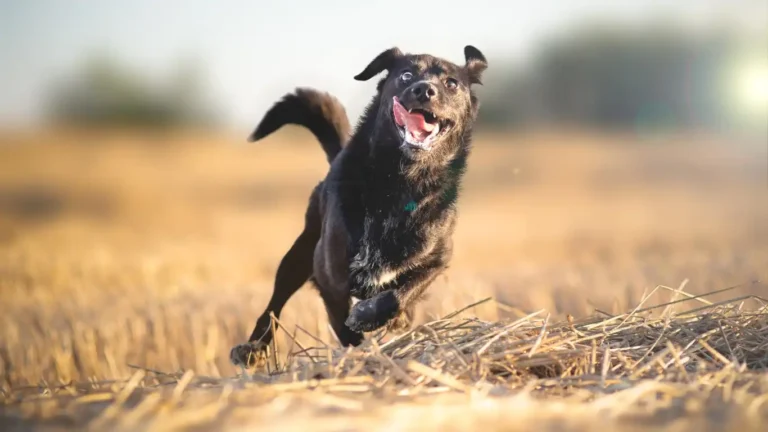What to Do if Your Dog is Vomiting Foam: Immediate Steps to Take
As a Veterinary Assistant with a focus on nutrition, I’ve seen firsthand how worrying it can be when your dog suddenly starts vomiting foam. It’s one of those situations where your heart races, and you immediately start asking yourself, “What’s going on? Is this serious? Should I take them to the vet right away?” While vomiting foam doesn’t always indicate a life-threatening issue, it’s important to know what to do if your dog is vomiting foam so you can respond appropriately and make sure your pup gets the care they need. In this post, I’ll walk you through some of the potential causes, what you can do at home, and when to head to the vet. Let’s dive in!
Understanding Why Your Dog Might Be Vomiting Foam

It’s important to understand that vomiting foam in dogs isn’t always a sign of something catastrophic. However, it’s definitely something to pay attention to. When a dog vomits foam, it’s often a combination of stomach acid, bile, and saliva. Typically, the foam is white or yellowish, and it can happen for several reasons. From simple issues like an empty stomach to more serious concerns like gastrointestinal diseases, the cause could vary.
If you’ve ever heard the phrase “stomach acid bubbling up,” that’s essentially what’s happening. The foam is a result of the stomach being empty for a while, which causes the acid to irritate the lining of the stomach. But there are also a few more concerning reasons behind it. Let’s look at some of the common causes:
1. Empty Stomach or Hunger Pangs

One of the most common reasons for dogs vomiting foam is simply having an empty stomach. Dogs can’t tell time, and sometimes their feeding schedule gets off track, or they just go too long between meals. If your dog hasn’t eaten in a while, bile builds up in the stomach, which can cause vomiting. This isn’t usually dangerous but can be uncomfortable for your dog, and it may occur more frequently in certain breeds like smaller dogs with faster metabolisms.
What to do: If your dog vomits foam after not eating for a long time, try to get them back on a consistent feeding schedule. If this is happening often, you may want to feed them smaller meals throughout the day, especially if you’re noticing the vomiting occurs early in the morning or before their first meal. A small snack like a treat or a bit of boiled chicken before bed can sometimes help keep things under control until morning.
2. Gastrointestinal Issues
If the vomiting continues or is accompanied by other signs like diarrhea, lethargy, or a lack of appetite, the cause may be more serious. Gastrointestinal issues such as gastritis, gastroenteritis, or even pancreatitis can cause vomiting foam. These conditions can inflame the stomach lining or intestines, leading to a buildup of stomach acid that eventually comes up as foam. These issues can sometimes come from something as simple as your dog eating something they shouldn’t have, like a garbage snack or a human food item that doesn’t sit well with them.
What to do: Keep an eye on your dog’s overall condition. If you notice that your dog’s vomiting foam is persistent or seems to be making them feel worse, it’s important to contact your vet. They may recommend tests to rule out any infections, inflammatory conditions, or other issues that require treatment.
3. Eating Something Toxic

One of the more serious reasons a dog might vomit foam is because they’ve ingested something toxic. Whether it’s plants, chemicals, human foods, or certain medications, dogs are notorious for getting into things they shouldn’t. Vomiting foam in these situations could be a sign that their stomach is rejecting the toxin. Some toxins cause immediate symptoms, while others can cause delayed reactions, making it all the more important to be aware of what your dog may have eaten.
What to do: If you suspect your dog has ingested something toxic, take immediate action. Depending on what they’ve eaten, your vet might suggest bringing your dog in for treatment right away, especially if you notice symptoms like excessive drooling, tremors, or difficulty breathing. If you’re unsure, it’s always better to err on the side of caution and call your vet or an emergency animal clinic for advice.
When to Be Concerned: Signs Your Dog Needs Immediate Attention
While some cases of vomiting foam aren’t cause for alarm, there are times when you should be concerned. Here are a few signs to look out for:
- Persistent vomiting: If your dog is vomiting foam several times throughout the day or for more than 24 hours, it’s time to get them checked by a professional.
- Changes in behavior: If your dog is lethargic, not eating or drinking, or seems disoriented, this could indicate a more serious problem.
- Additional symptoms: If your dog has diarrhea, fever, blood in the vomit, or other concerning signs, don’t wait—contact your vet immediately.
As someone who’s spent years working with animals, I’ve seen a lot of cases where people wait too long to take action. Don’t wait until it’s too late. If your dog’s health is deteriorating, don’t hesitate to reach out to a veterinarian right away. The quicker you get help, the better your dog’s chances of recovery.
What You Can Do at Home Before You See the Vet
In some cases, you might be able to manage the situation at home until you can get your dog to the vet. If your dog is otherwise healthy and only vomiting foam once or twice, these steps can help stabilize them and make them feel better:
- Fast your dog for 12-24 hours: If your dog is vomiting, giving their stomach a break from food can help calm things down. Make sure they still have access to fresh water to avoid dehydration.
- Gradually reintroduce food: After the fasting period, offer a bland diet, like boiled chicken and rice. Start with small portions and gradually increase as their stomach tolerates it.
- Monitor their condition: Keep an eye on your dog’s behavior and any changes in their symptoms. If the vomiting persists or worsens, seek professional help.
At the end of the day, you know your dog best. If something doesn’t feel right, or if their symptoms escalate quickly, don’t hesitate to take them to the vet. It’s always better to be safe than sorry when it comes to your furry friend’s health!
When Vomiting Foam Becomes a Regular Issue: What’s Going On?

If your dog is vomiting foam regularly, it’s time to start thinking about what might be happening behind the scenes. Sometimes, it’s not just a case of an empty stomach or a one-off incident. Ongoing vomiting foam could be a symptom of something more chronic or even an underlying condition that needs attention. As someone who’s spent years working in veterinary medicine, I can tell you that these situations require a little more investigation. Let’s break down some of the more persistent causes of vomiting foam in dogs, and how you can help your dog find relief.
Chronic Gastritis: An Ongoing Issue
Gastritis, which is the inflammation of your dog’s stomach lining, is one of the more common causes of chronic vomiting. It’s similar to how humans can suffer from stomach ulcers or acid reflux—except in dogs, it often results in vomiting foam. Gastritis can develop for a variety of reasons, including infection, food allergies, or even stress. Some dogs just seem to have more sensitive stomachs, which makes them prone to this type of irritation.
What to do: If your dog is showing signs of chronic vomiting or discomfort (like frequent foam vomiting), it’s crucial to take them to the vet for an accurate diagnosis. In many cases, treating the underlying inflammation can help reduce the frequency of vomiting. Your vet might recommend medications to reduce stomach acid or prescribe a special diet that’s easier on your dog’s tummy.
Food Sensitivities or Allergies
As a veterinary assistant, one of the most frequent causes I’ve encountered for dogs vomiting foam regularly is food sensitivities or allergies. If your dog has a sensitivity to a specific ingredient—like chicken, beef, or grains—it can lead to gastrointestinal upset, which could result in vomiting foam. This happens because the stomach is rejecting certain components in the food, leading to irritation and inflammation.
The tricky part with food sensitivities is that they’re not always obvious. Your dog might not show signs right away after eating, but hours later they might vomit foam or experience other digestive upset. If the vomiting is occurring shortly after meals, it could be a clue that their food is the issue.
What to do: If you suspect food sensitivities, try switching to a hypoallergenic diet or consult with your vet about an elimination diet. This process involves removing common allergens from their food and then slowly reintroducing them to pinpoint the culprit. It’s a process that takes time, but it’s worth it to get your dog back on track.
Potentially Dangerous Conditions: What to Watch For

While most cases of vomiting foam are relatively benign, there are a few serious conditions that could cause this symptom. If your dog’s vomiting foam is accompanied by other concerning symptoms, or if it’s happening frequently, it’s time to think about the possibility of a more severe condition. Some of these conditions are life-threatening and require immediate attention.
Pancreatitis: A Silent Threat
Pancreatitis is one of the more serious conditions that can cause vomiting foam. This happens when the pancreas becomes inflamed, often due to fatty food, infections, or other illnesses. When a dog is suffering from pancreatitis, it can cause them to feel extremely nauseous, resulting in vomiting foam, and even diarrhea. This condition is more common in certain breeds, but it can happen to any dog.
One of the tricky parts about pancreatitis is that the symptoms don’t always show up right away, and they can be mistaken for something less serious. If your dog is vomiting foam and also showing signs like lethargy, abdominal pain (they might flinch when you touch their belly), or a decreased appetite, pancreatitis could be the culprit.
What to do: Pancreatitis requires immediate veterinary care. Your vet will likely perform blood tests to confirm the diagnosis and may recommend hospitalization for IV fluids and pain management. In some cases, your dog may need a special low-fat diet to manage the condition long-term.
Gastrointestinal Obstruction: A Critical Concern
Gastrointestinal obstructions can occur when something your dog swallowed—like a toy, bone, or piece of clothing—becomes stuck in their intestines or stomach. This can lead to vomiting foam as the body tries to expel the foreign object. If you’ve noticed your dog vomiting foam and they’re also having trouble passing stool, this could be a sign that an obstruction is at play. In severe cases, obstructions can cut off blood supply to parts of the intestines, leading to tissue death, which is life-threatening.
What to do: If you suspect an obstruction, you need to act quickly. Take your dog to the vet as soon as possible for diagnostic imaging like X-rays or ultrasound. The vet may need to perform surgery to remove the object, and the sooner they do this, the better the chances for a full recovery. This is an emergency situation, and your dog’s health could be at risk without immediate treatment.
Managing Vomiting Foam Long-Term: Prevention and Care
So, now that we’ve covered the most common causes of vomiting foam in dogs, let’s talk about how you can prevent it from becoming a recurring issue. As a veterinary assistant, I’ve learned that consistent care and prevention are key to keeping your dog healthy and happy.
1. Stick to a Consistent Feeding Schedule
One of the easiest ways to prevent vomiting foam caused by an empty stomach is to maintain a consistent feeding schedule. Dogs thrive on routine, and a regular meal schedule helps keep their digestive system balanced. If you’re feeding your dog twice a day, try to keep it at the same time each day. And if you need to adjust the schedule, do it gradually to avoid upsetting their stomach.
2. Keep Dangerous Foods and Substances Out of Reach

One of the best ways to prevent vomiting foam from toxic ingestion is to keep harmful foods and substances out of your dog’s reach. Dogs can’t resist the urge to investigate, and sometimes that means munching on things that aren’t safe for them. Make sure to keep common household items like chocolate, grapes, and certain plants (like lilies and azaleas) far away from your dog. This is especially important if you have a curious or mischievous dog who tends to get into things they shouldn’t.
3. Regular Vet Check-Ups
Just like humans, dogs need regular check-ups to maintain their health. Routine veterinary visits allow your vet to catch potential problems early, including issues that might lead to vomiting. If your dog is prone to vomiting foam or other digestive issues, make sure to keep up with regular visits, as your vet can adjust their diet or recommend treatments to prevent further issues.
Remember, you know your dog better than anyone else. If something doesn’t feel right, or if you’re seeing patterns of vomiting foam that don’t seem to be improving, don’t hesitate to reach out to your vet. They’re your best ally in ensuring your dog stays healthy and comfortable for years to come!
When to Seek Immediate Veterinary Care: Red Flags You Can’t Ignore

While it’s natural to want to keep your dog comfortable at home, there are certain situations where you absolutely cannot wait to get help. Vomiting foam can sometimes be a symptom of something more urgent that requires immediate veterinary care. Over the years, I’ve had the opportunity to work with countless dogs experiencing gastrointestinal issues, and I can tell you that it’s always better to err on the side of caution when it comes to your dog’s health.
If your dog is vomiting foam and showing any of the following red flags, it’s time to get them to the vet right away:
1. Severe Lethargy or Weakness
If your dog seems unusually tired, weak, or unresponsive, this could be a sign that something is wrong. Persistent vomiting combined with lethargy could indicate a serious issue like dehydration, organ failure, or a systemic infection. Dehydration is particularly concerning, as it can lead to a host of other health issues if not addressed quickly.
What to do: If your dog is unable to keep their eyes open, is dragging their body around, or is refusing to interact with you, it’s crucial to take them to the vet as soon as possible. It’s always better to be safe than sorry, especially if they’re exhibiting signs of exhaustion after vomiting foam.
2. Blood in Vomit or Stool
One of the most alarming signs that your dog needs immediate veterinary attention is if you notice blood in their vomit or stool. The presence of blood could mean internal bleeding, which could be caused by conditions like ulcers, toxins, or even something more severe like an injury or foreign body obstruction.
What to do: If you notice any blood in your dog’s vomit or stool, do not wait. This is a medical emergency, and your dog will need prompt veterinary care. If possible, bring a sample of the vomit or stool to the vet for further analysis.
3. Difficulty Breathing or Panting Excessively
If your dog’s vomiting foam is accompanied by heavy breathing, wheezing, or panting excessively, this could be a sign of a more serious condition such as pancreatitis, a lung issue, or even poisoning. Dogs that are struggling to breathe need urgent care, as difficulty breathing can quickly become life-threatening.
What to do: If your dog is showing signs of distress or difficulty breathing, don’t wait for things to improve. Call your vet or take them to the emergency clinic right away. It’s always better to let a professional assess the situation and provide the necessary treatment.
How to Comfort Your Dog During Recovery

After your dog has been treated for vomiting foam or any underlying condition, the recovery process can be just as important as the treatment itself. As someone who’s worked with both dogs and their owners, I’ve seen how small gestures of comfort and care can make a big difference in how quickly your dog bounces back. Here are some tips on how you can comfort your dog as they recover from vomiting foam and get back to feeling like themselves.
1. Keep Them Hydrated
Dehydration can be a serious concern after vomiting, especially if your dog has been vomiting foam repeatedly. After treatment, your vet will likely advise you to encourage your dog to drink water regularly. Offer small amounts of water frequently throughout the day. You can also try offering ice cubes or an electrolyte solution specifically designed for pets to help rehydrate them.
What to do: If your dog is reluctant to drink, you can try using a syringe (without the needle) to slowly administer water into their mouth. Just make sure they swallow between each small amount to avoid choking. If dehydration persists, or if they refuse to drink altogether, call your vet for advice.
2. Follow the Vet’s Dietary Recommendations
During the recovery period, your vet may recommend a special diet to help soothe your dog’s stomach and prevent further vomiting. This could be a bland diet like boiled chicken and rice or a prescription diet designed for sensitive stomachs. Stick to the recommended diet and avoid giving your dog human food, as tempting as it may be.
What to do: If your dog is picky or doesn’t seem to want to eat, try offering small meals throughout the day instead of one large meal. If your dog refuses to eat for more than a day or two, contact your vet for further advice.
3. Provide a Calm, Comfortable Environment
Just like humans, dogs can feel stressed or anxious when they’re not feeling well. Creating a calm, quiet environment for your dog to recover in can make a huge difference. Make sure they have a comfortable, cool place to rest where they won’t be disturbed. Limit their activity for a few days to allow their body to heal.
What to do: If your dog enjoys snuggling, spend some time with them to provide comfort and reassurance. However, don’t force them to be active or interact if they’re not in the mood. Let them rest and recover at their own pace.
When Vomiting Foam Becomes a Recurring Issue: Time to Get to the Root Cause
If your dog continues to vomit foam on a regular basis, it’s essential to get to the bottom of what’s causing it. Persistent vomiting isn’t something to brush off, even if it seems to be a minor issue. As a veterinary assistant, I can’t stress enough how important it is to be proactive in these situations. Regular check-ups, a balanced diet, and addressing any underlying conditions can make a world of difference for your dog’s long-term health.
If your dog is vomiting foam regularly, work with your vet to run the necessary tests, like blood work, X-rays, or ultrasound, to determine what might be causing the issue. It could be something as simple as a food allergy, or it could be a more serious condition like pancreatitis or gastrointestinal disease. Regardless, having a clear diagnosis will guide the treatment plan and help you get your dog back to feeling their best.
References
Disclaimer: This article is intended for informational purposes only and should not replace professional veterinary advice. If your dog is experiencing any health issues, always consult with a licensed veterinarian for a proper diagnosis and treatment plan.






